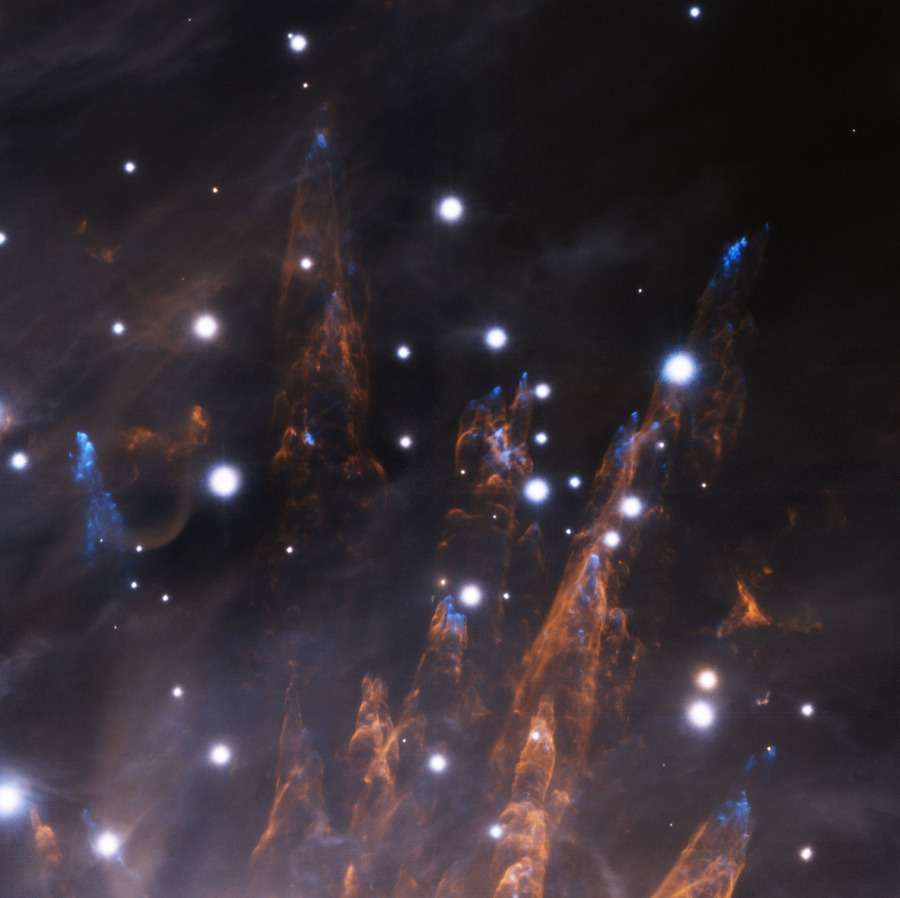It looks like you're using an Ad Blocker.
Please white-list or disable AboveTopSecret.com in your ad-blocking tool.
Thank you.
Some features of ATS will be disabled while you continue to use an ad-blocker.
2
share:
These are the two words that immediately came in my mind when I looked at this beautiful picture...

APOD call it today "The Orion Bullets":
In the picture below there's a wide-field image of the Orion Nebula region obtained with the ISPI near infrared camera on the Blanco 4-meter Telescope at the Cerro Tololo Inter-American Observatory in Chile. The Gemini adaptive optics image shown here as an inset to illustrate the field of view relative to the familiar region of the Orion Nebula.


Gemini

APOD call it today "The Orion Bullets":
Cosmic bullets pierce the outskirts of the Orion Nebula some 1500 light-years distant in this sharp infrared close-up.
Blasted out by energetic massive star formation the bullets, relatively dense, hot gas clouds about ten times the size of Pluto's orbit, are blue in the false color image.
Glowing with the light of ionized iron atoms they travel at speeds of hundreds of kilometers per second, their passage traced by yellowish trails of the nebula's shock-heated hydrogen gas. The cone-shaped wakes are up to a fifth of a light-year long.
The detailed image was created using the 8.1 meter Gemini South telescope in Chile with a newly commisioned adaptive optics system (GeMS). Achieving a larger field of view than previous generation adaptive optics, GeMS uses five laser generated guide stars to help compensate for the blurring effects of planet Earth's atmosphere.
In the picture below there's a wide-field image of the Orion Nebula region obtained with the ISPI near infrared camera on the Blanco 4-meter Telescope at the Cerro Tololo Inter-American Observatory in Chile. The Gemini adaptive optics image shown here as an inset to illustrate the field of view relative to the familiar region of the Orion Nebula.

The exceptional resolution of the new image was made possible by adaptive optics technology in place at Gemini Observatory. With a laser guide star as a reference and a rapidly deformable mirror for real-time correction, astronomers can compensate for most of the atmospheric distortions that blur the near-infrared image of a star whose light reaches the telescope's primary mirror. The system deploys a yellow/orange solid-state sodium laser that produces the artificial guide star by exciting and causing a small column of sodium gas about 90 kilometers (56 miles) up in our atmosphere to glow. The artificial star it creates becomes a reference star for the adaptive optics system, and allows it to determine how the atmosphere distorts the incoming near-infrared starlight.

Gemini
edit on 10-1-2013 by elevenaugust because: (no reason given)
new topics
-
4/27/24 New Jersey Earthquake
Fragile Earth: 3 hours ago -
Fun with extreme paints
Interesting Websites: 5 hours ago -
CIA is alleged to be operat social media troll frms in Kyiv
ATS Skunk Works: 6 hours ago -
Rainbow : Stargazer
Music: 6 hours ago -
I sleep no more.
Philosophy and Metaphysics: 9 hours ago -
Canada caught red-handed manipulating live weather data and make it warmer
Fragile Earth: 9 hours ago -
Why Files Our Alien Overlords | How We Secretly Serve The Tall Whites
Aliens and UFOs: 10 hours ago
2
